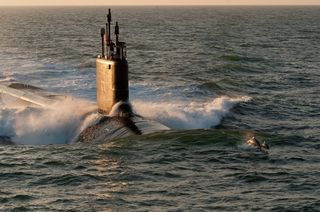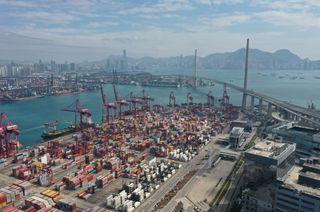When Japan announced its three strategic documents—National Security Strategy (NSS), National Defense Strategy (NDS), and Defense Build-up Plan (DBP)—in December 2022, one of the hallmarks was the explicit commitment to increase Japan’s national security-related spending to approximately two per cent of its Gross Domestic Product (GDP) by FY2027, with the total of defense spending between FY23-27 amounting to JPY 43 trillion (AU D45.4 billion).Staying true to this commitment, the last couple of years have seen a considerable increase in Tokyo’s defence spending. Following the dramatic increase in the FY2023 defense budget which totaled approximately JPY 6.1 trillion (AUD 5.8 billion) and saw an increase of over 27 per cent compared to the FY2022 defense budget, Japan’s Ministry of Defense (JMOD) finalised its Fiscal Year (FY) 2024 budget request of approximately JPY 7.7 trillion on 22 December 2023, a 17 per cent increase on its FY2023 defense budget.
Tokyo’s decision to commit to nearly doubling its defence spending through to 2027 is a marked departure from its decades-long practice of limiting its defence spending at approximately one per cent of Gross Domestic Production (GDP). Although never legally codified, this normative constraint was set by Prime Minister Takeo Miki when his cabinet approved a decision in November 1976 that set a declaratory policy that Japan’s defence spending would not exceed one percent of its GDP. Even though this declaratory policy was officially reversed by Prime Minister Nakasone in January 1987 with his cabinet’s decision, successive governments by and large continued to honor the 1976 position and limited Japan’s defence budget. Even Junichiro Koizumi and Shinzo Abe, prime ministers who were known to be strong advocates for a more robust defence capability, approached defence spending increases very cautiously.
The primary driver behind this normative constraint was anchored in Japan’s postwar approach to its defence buildup. Known as “Senshu Bouei”, Japan shaped its defence policy on the principle that “the use of defensive force is kept to the minimum necessary for self-defense” and that any changes to Japan’s defence capabilities would be “limited to the minimum necessary for self-defense.” In fact, despite the changes brought to Japan’s defence policy since the end of the World War II this “Senshu Boei” principle has remained the key organising principle of Japan’s defence policy – including the latest
Drivers for increasing defence spending
Despite the fact that “Senshu Boei” remains intact, Japan has been trying to break out of other normative constraints. Under Abe’s watch, for example, Tokyo revised its defence equipment and technology transfer, replacing the Three Principles of Arms Exports with the Three Principles of Defense Equipment Transfer in the spring of 2014, with the application of these principles further relaxed in December 2023 to allow more transfers of Japanese defence equipment to other countries. More importantly, in July 2014 Tokyo revised its interpretation of Article 9 of the national constitution to allow the government to exercise the right of collective self-defence when certain conditions are met, changes authorised by the Diet later that same year. Even though the scope of the reinterpretation remains limited, it was nonetheless a noteworthy departure from Japan’s past adherence to a “self-defence” concept limited strictly to Japan’s own defence, and paved the way for Japan to expand its security partnership beyond its alliance relationship with the United States to include other like-minded countries, including Australia.
These changes have been driven by Tokyo’s increasing sense of vulnerability to security threats in its immediate neighbourhood and shifts in the international balance of power, acknowledged in its first National Security Strategy (NSS) released in 2013. The 2013 NSS also pointed to the increasingly transnational nature of security threats, noting an acceleration and dissemination of technological power and progress and an attendant diversification of capable agents across the international community to include non-state actors. The description of the security environment surrounding Japan sharpened considerably in the 2022 NSS, which suggested that the country now faced era-defining changes, including a regional security environment “as severe as it ever has been since the end of World War II” and a global order whose future was “now at stake.”
Japan's reinterpretation of its self-defence concept paved the way for its expanded security relationship with the United States and Australia.
Of particular note were changes in how Japan described the challenges it saw in China’s rise. Though the 2013 NSS highlighted China’s increasing influence on the international stage, lack of transparency in its military spending and behaviour that could “be regarded as attempts to change status quo by coercion based on its assertions”, it nevertheless indicated that the international community expected China to comply with existing rules and norms. In contrast, the 2022 NSS singles out China’s intensifying efforts to change the status quo by force in the East and South China Seas, as well as its unwillingness to participate in international economic frameworks that the world’s other creditor nations take part, defining China’s behaviour as a “matter of serious concern” not only for Japan but for the international community: “an unprecedented and greatest challenge in ensuring peace and security for Japan and peace and stability for the international community.”
Reflecting a greater sense of urgency about Japan’s own security — particularly vis-à-vis China — the 2022 NSS discusses how Japan plans to address its security challenges more extensively. First and foremost, it doubles down on its commitment to continue to modernise the US-Japan alliance. Secondly, compared to the 2013 NSS, it places far greater emphasis on developing and institutionalising Tokyo’s security partnerships with other “like-minded” countries, particularly those in the Indo-Pacific region. For instance, Japan has accelerated efforts to institutionalise its security partnership with Australia through measures such as the Acquisition and Cross-Servicing Agreement (ACSA), Reciprocal Access Agreement (RAA), and an updated Joint Declaration on Security Cooperation which flags greater joint development of defence equipment, the transfer of defence equipment and technology, capacity building support, strategic communication, and exploration of Flexible Deterrent Options (FDO).
Tokyo’s concerns about managing Beijing’s behaviour are also reflected in the way that the 2022 NSS refers to Taiwan and South Korea. For instance, Taiwan is identified as “an extremely important partner and a precious friend of Japan, with whom Japan shares fundamental values, including democracy, and has close economic and personal ties”. Even South Korea, with which Japan’s relationship cooled in recent years, is referred to as “a highly important neighbouring country to Japan both in a geopolitical context and in regard to Japan's security” in the revised NSS.
Reinforcing Japan’s own defence capabilities
In addition to stressing the importance of Japan enhancing these partnerships, the NSS is notable in discussing at length Japan’s own efforts towards, as Prime Minister Kishida has often put it, “fundamentally reinforcing defense capabilities.” In that context, with a heightened sense of urgency vis-à-vis the security challenges posed by China and North Korea, the defence establishment in Japan is intensifying discussions on how to better prepare Japan for cross-domain operations, to improve its capacity to leverage unmanned systems, and to expedite the introduction of counterstrike and other enabling command and control (C2) and intelligence capabilities into the Japan Self-Defense Forces (JSDF). It also touches upon the importance of investing in an indigenous defence industrial base that can leverage the advanced technologies developed both in defence and non-defence sectors to reinforce deterrence.
Specifically, the DBP articulates Japan’s acquisition and development priorities over the next decade in the following categories
- “stand-off defense capability” (often referred to as “counterstrike capability”)
- integrated air missile defense (IAMD),
- defence capability that leverages unmanned assets,
- cross-domain operation capabilities,
- command and control (C2) and intelligence,
- mobile deployment and protection of Japanese citizens, and
- sustainability and force resiliency.
Within these areas, the DBP also discusses focus areas for investment in defence technology, particularly in nurturing an indigenous defence industrial base. As such, it focuses on the technologies relevant for the development of capabilities such as:
- “stand-off defense capability”;
- Countermeasures against Hypersonic Gliding Vehicles (HGV) and other systems;
- Countermeasures against drones and swarm attacks;
- Next-generation fighters; and
- Other measures to enhance deterrence.
The DBP also provides a rough timeline for the development and acquisition of some of these capabilities. For instance, the DBP indicates that the development of Type-12 Surface-to-Surface Missile (SSM) will involve: the development of its ground-launched variant to be complete by FY25, sea-launched variant by FY26, and air-launched variant by FY28. The development of the high-speed gliding vehicle is also anticipated to be completed by FY31.
Japan’s FY23 and FY24 defence budget
The FY2023 defence budget — ‘Year 1’ of the 5-year plan to double Japan’s defence budget—restructured Japan’s defence budgeting plans in a few areas. Most notably, it departed from the conventional categorisation of “front-end” (sho-men) focused on hardware and “back-end” (kou hou) focused on logistics and sustainability, and reorganised its funding priorities into 15 functional areas. The FY 2023 budget also jump-started the efforts to back-fill spare parts and munitions—the areas that have been long overlooked—to improve the sustainability of the operations. In the DBP’s second year, Japan’s FY 2024 defence budget request continues to channel investment into the above seven priority areas. It continues the trend set by the FY 2023 budget with a couple of notable additions. One is Japan’s participation in the joint development of Glide Phase Interceptor (GPI) with the United States. Announced in August 2023 as the US-Japan-ROK Camp David Summit, the program is the first government-to-government agreement on the joint development of defence equipment between the United States and Japan since the Standard II-A missiles. Anticipated to be fitted to the new Aegis destroyer that Japan is purchasing under the DBP, this is a much-needed joint development program between the two countries that can facilitate better defence industrial cooperation between the two countries.
The FY24 budget request also accelerates other efforts to acquire certain capabilities. For instance, it brings forward financing for Japan to acquire so-called “stand-off capability”— including Tomahawk missiles and Type-12 surface-to-ship guided missiles—by the end of FY25, one year ahead of the original acquisition schedule. It also allocates additional budget to allow the government to sign acquisition contracts for other systems, such as the E-2D Hawkeye aircraft, by the end of the FY24 second quarter.
Moreover, following on from the entry into force of the Defense Industrial Base Enhancement Law in October 2023, the FY2024 budget allocates new resources to establish a new research department within the Acquisition, Logistics and Technologies Agency (ATLA) to revolutionise Tokyo’s traditional approach to defence research and development. Tentatively named the Defense Innovation Technology Research Institute, this new research department is supposed to incorporate the lessons that the Japan Ministry of Defense (JMOD) has learned from studying the efforts of US organisations like the Defense Innovation Unit (DIU) or Defense Advanced Research and Planning Agency (DARPA), and aims to support innovation in the key technology areas described earlier. Although its details are not yet clear, this new research institute is expected to focus on identifying and developing “breakthrough technology” with an eye to quickly operationalising viable projects.

Challenges
Public opinion
All these efforts point to Japan’s unwavering commitment to invest in its national defence. Looking ahead, however, some concerns remain. To begin with, despite government and political leaders’ efforts to articulate the worsening security environment for Japan, the Japanese public remain somewhat wary of increasing defence spending increase when they are asked pointed questions about how to fund such increases. For instance, a January 2023 poll taken by the Yomiuri Shimbun, whose readership is largely right-of the-centre in ideological terms, showed that 63 per cent of respondents were against tax increases flagged by the government as essential to supporting defence budget increases. Likewise, an opinion poll taken by the Sankei Shimbun, a conservative newspaper with a readership largely supportive of a stronger national defence capability, in February 2023 showed that under 40 per cent of respondents supported a tax hike to secure resources for defence spending increase.
Political leadership
Prime Minister Kishida requires public support – both for himself and for higher defence spending – to push his agenda through Japan’s political processes. Even though the special measures law to secure the necessary funding for defence spending increase had passed the Diet in June 2023, Japan’s ruling Liberal Democratic Party (LDP)’s Research Committee on Tax Systems—whose recommendations to the government on tax issues are typically of great influence—indicated in July 2023 that the recommended tax hikes necessary to fully fund projected defence spending increases should not commence in FY2024. Meanwhile, Prime Minister Kishida’s approval rating continues to dip, hovering around 30 per cent despite efforts to revamp the government’s popularity through a cabinet reshuffle. Should it persist, this weakened political position may prevent Kishida from making politically difficult decisions on defence issues, and restrict the government’s ability to resource defence spending through unpopular measures such as tax hikes.
Economic constraints
Finally, given Japan’s difficult fiscal reality, questions remain over the sustainability of the momentum behind greater defence spending over the longer term. On February 15 this year, the media reported that the Japanese economy, the second largest in the world until 2010, had now slipped to fourth place behind the United States, China and Germany. Having the oldest population—more than 1 in 10 people are aged 80 or older – and suffering from one of the world’s worst birth rates – Japan's overall population has continued to fall since 2008 – coupled with stagnant wages and a weak yen, it is unlikely that Japan will find new ways to considerably regain its economic vitality in the near future. As Japanese society continues to age, social security spending is projected to reach nearly 25 per cent of Japan’s annual budget by 2040 according to some estimates, meaning that the long-term feasibility of sustaining an elevated level of defence spending beyond the current DBP may be in serious question.
Kishida set Japan on a course to take its first steps towards reinventing Japanese security posture in a meaningful way. But with a lack of public support and the grim fiscal reality that the nation faces, it remains to be seen whether he or his successors will be able to see this process through.
This article was commissioned as part of the Japan-Australia-United States trilateral security study project, Assessing the implementation of Abe's National Security Strategy.





